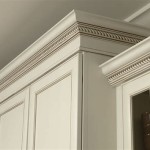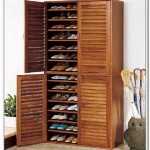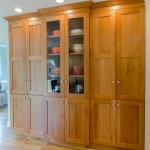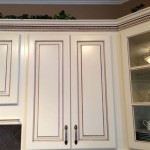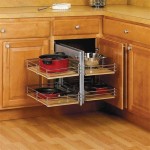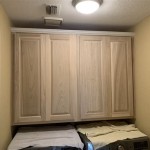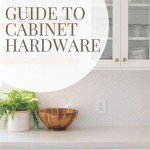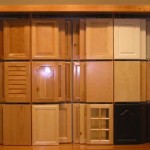Placing Knobs On Cabinet Doors: A Comprehensive Guide
The seemingly simple task of placing knobs on cabinet doors is, in actuality, a critical element in achieving both aesthetic appeal and functional efficiency within a kitchen or any space utilizing cabinetry. Proper placement can significantly impact the overall look and feel of the room, while incorrect placement can lead to visual imbalance and awkward operation. This article provides a detailed guide to understanding the principles and techniques involved in knob placement, ensuring a professional and satisfying outcome for both DIY enthusiasts and seasoned professionals.
The considerations involved in this process extend beyond mere measurement and drilling. It encompasses an understanding of cabinet styles, hardware design, user ergonomics, and the architectural context within which the cabinetry is situated. Careful planning and execution are paramount to achieving a cohesive and harmonious visual presentation.
Before commencing any physical work, a thorough evaluation of the existing cabinetry is crucial. This includes assessing the door styles (e.g., shaker, raised panel, slab), the overall design aesthetic of the kitchen or room, and the intended function of each cabinet. This preliminary analysis will significantly inform the subsequent decision-making process regarding knob selection and placement.
Understanding Cabinet Styles and Knob Placement
Cabinet styles vary considerably, and each style lends itself to specific knob placement strategies. Shaker cabinets, characterized by their recessed panel and clean lines, often benefit from knobs placed at the intersection of the stile and rail – typically in the lower corner for lower cabinets and the upper corner for upper cabinets. This placement emphasizes the cabinet's geometric form and provides a balanced visual effect.
Raised panel cabinets, displaying more ornate detail and dimension, offer a wider range of placement possibilities. Knobs can be positioned on the raised panel itself, at the stile and rail intersection, or even slightly off-center to complement the cabinet's decorative features. The key is to maintain visual harmony and avoid obstructing any intricate design elements.
Slab cabinets, known for their minimalist design and flat surfaces, demand a more considered approach to knob placement. Precision and symmetry are crucial in this context, as any deviation from the established plan will be immediately noticeable. Centering the knob on the door, either horizontally or vertically, is a common strategy, but alternative options, such as placing the knob closer to the top or bottom edge, can also be effective depending on the overall room design.
Beyond these common styles, a variety of other cabinet designs exist, including beaded inset, glass-fronted, and custom-made cabinets. Each of these requires individualized consideration and adaptation of the general principles outlined above. The goal is always to choose a placement that complements the cabinet's unique characteristics and contributes to the overall aesthetic coherence of the space.
Furthermore, the size and style of the knob itself should be carefully considered in relation to the cabinet design. A small, understated knob might be suitable for a minimalist slab cabinet, while a larger, more decorative knob might be more appropriate for a raised panel cabinet. The knob's finish (e.g., brushed nickel, antique brass, matte black) should also coordinate with the overall hardware scheme and the room's color palette.
Practical Considerations for Knob Placement Accuracy
After determining the optimal placement based on cabinet style and aesthetic considerations, the practical aspects of installation must be addressed. Precise measurement and marking are essential to ensure consistent and accurate knob placement across all cabinet doors. The use of a measuring tape, pencil, level, and a specialized cabinet hardware jig can significantly improve accuracy and efficiency.
A cabinet hardware jig is a tool designed to facilitate precise drilling for knobs and pulls. These jigs typically feature adjustable guides and drill bits that allow for consistent hole placement on multiple cabinet doors. While not strictly necessary, a jig can greatly simplify the installation process and reduce the risk of errors, especially for larger projects.
Before drilling any holes, it is advisable to create a template using cardboard or masking tape. This template can be used to mark the desired knob placement on each cabinet door, ensuring uniformity and preventing irreversible mistakes. Once the template is prepared, it can be temporarily affixed to each door using tape or clamps, allowing for precise marking with a pencil or awl.
When drilling the holes for the knobs, it is crucial to use the appropriate drill bit size. Using a bit that is too small will make it difficult to install the knobs, while using a bit that is too large will result in loose or wobbly knobs. The drill bit size should be slightly larger than the diameter of the knob's screw threads.
To prevent splintering or chipping of the cabinet door's surface, it is recommended to use a backing board when drilling. This can be a piece of scrap wood placed behind the door to support the material and minimize vibration. Apply firm, even pressure while drilling, and avoid forcing the drill bit through the wood.
Once the holes are drilled, the knobs can be attached using the provided screws. Ensure that the screws are tightened securely, but avoid over-tightening, as this can damage the cabinet door or strip the screw threads. Check the knob's stability and alignment before proceeding to the next door.
Ergonomics and Functionality in Knob Placement
Beyond aesthetics, the ergonomic aspects of knob placement must also be considered. The placement should facilitate comfortable and efficient use of the cabinets for all members of the household. Factors such as height, reach, and hand size can influence the optimal knob position.
For lower cabinets, knobs are typically placed closer to the top edge of the door, within easy reach from a standing position. Placing the knob too low can require bending or stooping, which can be uncomfortable or even painful for some individuals. For upper cabinets, knobs are generally positioned closer to the bottom edge of the door, allowing for convenient access without excessive reaching.
The distance between the knob and the cabinet's edge should also be considered. A knob that is placed too close to the edge may be difficult to grasp, while a knob that is placed too far from the edge may require excessive reaching. A general guideline is to position the knob between 1 and 3 inches from the edge of the door, depending on the size and style of the cabinet and the knob itself.
In kitchens used by individuals with limited mobility or physical limitations, it may be necessary to adjust the knob placement to accommodate their specific needs. For example, knobs might be placed closer to the front edge of the cabinets or at a lower height to improve accessibility. Consider lever-style handles as alternatives to knobs; levers often offer improved grip and ease of use for individuals with arthritis or other hand impairments.
Furthermore, the placement of knobs should be consistent across all cabinets in a given space. Inconsistent placement can create a visually jarring effect and make it difficult for users to locate and operate the cabinets efficiently. Maintain a consistent height and distance from the edge to ensure a uniform and user-friendly experience. If using both knobs and pulls (longer handles), ensure the style complements each other and that their placement creates a balanced visual. For example, knobs may be used on smaller upper cabinets while pulls are used on larger lower drawers.
Ultimately, careful attention to detail in knob placement can transform the look and function of cabinetry, enhancing both the aesthetic appeal and the user experience. By considering cabinet styles, hardware design, ergonomic principles, and practical installation techniques, a professional and satisfying outcome is more easily achieved.

Cabinet Hardware Placement Guide

How To Place Cabinet Knobs Pulls

How To Place Cabinet Knobs Pulls

Cabinet Hardware Placement Guide

Cabinet Hardware Installation Guide At Cabinetknob Com

Design 101 Cabinet Hardware Placement Lark Linen

How To Place Cabinet Knobs Pulls

How To Install Knobs On Cabinet Doors

A Simple Guide For Ideal Cabinet Knob Placement

Set It And Forget Small Spikes Help Keep Knobs In Place Amerock
Related Posts

